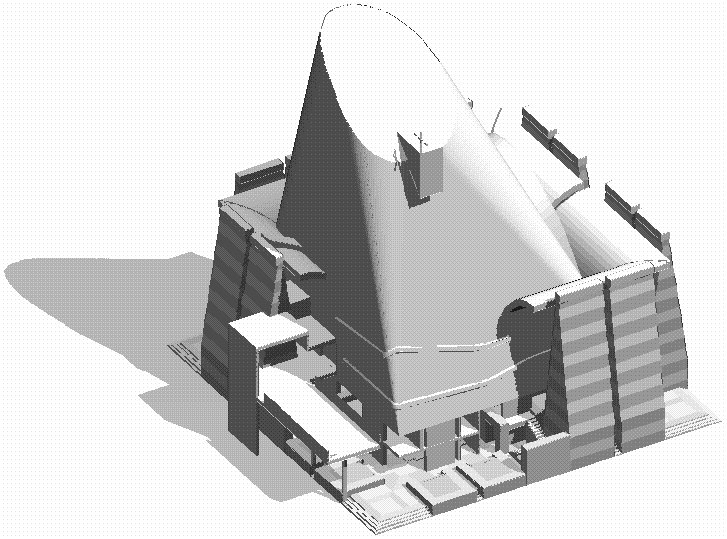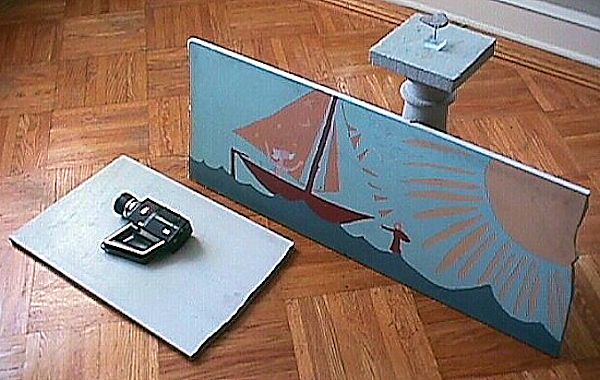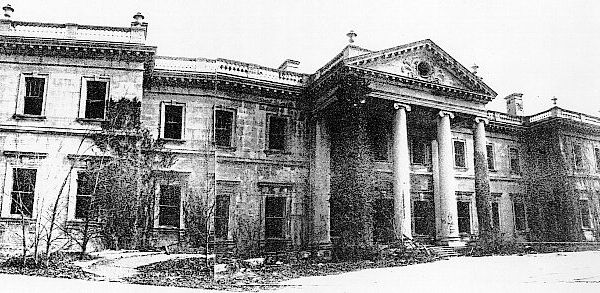2007.10.02 22:00
Readymades in Architecture?
Ah, function decontextualized--readymade mosque.

3334r
2007.10.02 17:04
Readymades in Architecture?
2 October 1968
death of Marcel Duchamp
"I'm sure there's still some room in the readymade museum."
--2003.11.2003
Someone should tell Ouroussoff that the Colosseum isn't even delineated within the Ichnographia Campi Martii. At least we now know what readymade architectural journalism looks like.
3334r
| |
2007.09.30 09:19
Readymades in Architecture?

Monument Hystérique
In the panic after Pearl Harbor, German planes were reported nearing the coast; the Boston Museum rushed its treasures out of sight. The National Gallery in Washington very intelligently secured the vast empty Vanderbilt chateau of Biltmore in the North Carolina mountains, to shelter the chief masterpieces of the Mellon Collection. The Metropolitan first thought, on the example of the National Gallery in London, of an abandoned mine or quarry, and was on the point of taking one up the Hudson. Fortunately, the prolonged drought during which they inspected it came to an end, and water began to seep in just before they were to occupy it. Various empty country houses were offered them. Soon they announced they had taken a country place, "a hundred miles inland." It was Whitemarsh Hall. Priorities on materials were somehow secured; steel racks for paintings were put up in the salon, steel shutters at the windows. Packing cases were piled in the billiard and other rooms.

Other institutions sent their treasures there also, so that if a single bomb had landed it would have destroyed them all. The hysterical rush to put things in Whitemarsh Hall inspired Hardinge Scholle of the Museum of the City of New York, who had at first participated in the movement, to call the house a "monument hystérique."
--George and Mary Roberts, Triumph on Fairmount: Fiske Kimball and the Philadelphia Museum of Art (Philadelphia: J.B. Lippincott Company, 1959).
ps
Practically every architect that sees Museumpeace (even in person) acts as if it isn't there.
3334s
| |
Undoubtedly, for both Nietzsche and Freud theoretical language must comprise within itself a plurality: the plurality of the subject, of knowledge, of institutions. Once language has been discovered to be only one of the ways of organizing the real, it becomes necessary to introject the profound fragmentation of the real itself. Hence it must be made clear that history cannot be reduced to a hermeneutics, that history's objective is not to rend the "veil of Maya" covering the truth, but rather to shatter the barriers that it itself sets up, in order to proceed and to go beyond itself. There is no point in identifying these barriers with the great institutions. Power is itself plural: it runs through and cuts across social classes, idealologies, and institutions. On this we can still agreee with Foucault: a single locus of Great Refusal does not exist; only from within systems of power can the mechanisms of power be known.
In other words, it must be clearly understood that between institutions and power systems perfect identity does not exist. Architecture itself, inasmuch as it is an institution, is anything but a unitary ideological block: as with other linguistic systems, its ideologies act in a highly nonlinear fashion. So much so that it is legitimate to suspect that the very criticism of architectural ideology--as it has been conducted up to now--has only reckoned with the most obvious and immediate aspects of that ideology: the refusals, repressions, and introspections, which run through the body of architectural writing. However, to displace the investigation from a text (a work that offers itself up in all its character of apparent completeness) to a context is not sufficient. The context binds together artistic languages,
physical realities, behaviors, urban and territorial dimensions, politico-economic dynamics. But it is constantly broken up by "technical accidents": it is broken up by tactical maneuvers that obscurely intersect larger strategies; it is broken up by subterranean ideologies that nevertheless act on an intersubjective level; it is broken up by the interaction of diverse techniques of domination, each of which possess its own untranslatable language.
Simmel, on the basis of a partial reading of Nietzsche, recognizes this in his Metaphysics of Death: "The secret of form lies in the fact that it is a boundary; it is the thing itself and at the same time the cessation of the thing, the circumscribed territory in which the Being and the No-longer-being of the thing are one in the same." If form is a boundary, there then arises the problem of the plurality of boundaries--and the calling them into question. It is not by chance that Simmel himself in his essay "Fashion" recognizes that "the way in which it is given to us to comprehend the phenomena of life causes us to perceive a plurality of forces at every point of existence; we feel that each of these forces aspires to surpass the real phenomenon, limiting its own infinity in relation to the others' and transforming it into pure tension and desire." And he adds shortly afterward: "The principle of adherence to given formulas, of being and acting like others, is irreconcilably opposed to the striving to advance to ever new and individual forms of life; for this very reason social life represents a battleground, of which every inch is stubbornly contested, and social institutions may be looked upon as the peace treaties, in which the constant antagonism of both principles has been reduced externally to a form of cooperation."
Manfredo Tafuri, The Sphere and the Labyrinth: Avant-Gardes and Architecture from Piranesi to the 1970's (1987), pp.5-6.
|


